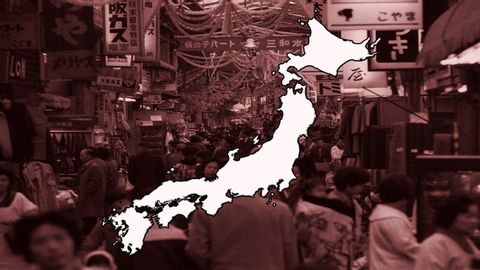日本-経済の歴史(ドキュメンタリー (Japan - The History of Economics (Documentary))
Mayu Okuuchi が 2021 年 01 月 14 日 に投稿  この条件に一致する単語はありません
この条件に一致する単語はありませんUS /ˈbesɪkəli,-kli/
・
UK /ˈbeɪsɪkli/
US /ˈkraɪsɪs/
・
UK /'kraɪsɪs/
US /əˈmaʊnt/
・
UK /ə'maʊnt/
- n. (c./u.)量 : (金)額
- v.i.総計(いくらかに)達する
US /dɪˈmænd/
・
UK /dɪ'mɑ:nd/
- n. (c./u.)要求;要求;需要;法的要求
- v.t.要求する;必要
エネルギーを使用
すべての単語を解除
発音・解説・フィルター機能を解除

